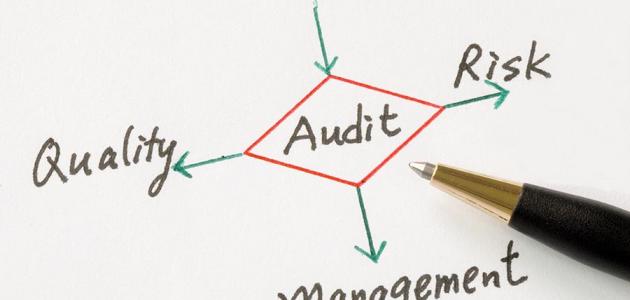Definition of the accounting system
The accounting system is known as a group of manual and computer operations that aim to create accounting records, and then establish controls and methods that help analyze and summarize them. So that it is easy to deal with and benefit from in making decisions within the organization’s environment. The accounting system is also known as the accounting activities used with the records and reports that the facility needs. In order to obtain financial information that helps in evaluating one's business in a correct manner, by relying on a group of methods that help in creating, saving, and retrieving this information, whether through paper or computer storage. Other definitions of the accounting system include the processes that include recording and classifying accounting documents and books, and then determining the procedures that are followed in collecting information related to administrative and financial transactions in order to choose the appropriate means to display their results.
Features of the accounting system
The accounting system in most administrative, industrial, and commercial establishments is characterized by the following features:
- Flexibility of financial operations: It is one of the best special features in the accounting system. It depends on providing a set of means that help management carry out financial operations without any complications during work. Especially when using a computer-based accounting system, which contributes to obtaining financial results quickly.
- Business statistics: It is a set of digital results of accounting and financial operations, which are provided by the accounting system within the work environment, which helps managers and those responsible for work in the organization in making appropriate decisions and applying procedures that help remedy errors, and work to correct them if they occur.
- Data structureIt is one of the modern means and methods that are used to collect similar data together according to their names, numbers, or any other classifications used by the organization’s accounting system, and the data structure helps in easy obtaining accounting information.
Accounting system tools
The accounting system in any business environment uses a set of tools that help it implement its functions, and the most important of these tools are:
Read also:What is money laundering- Accounting entriesIt is a set of accounting operations that the accountant writes in order to strike a balance between its parties, and helps him record the private financial activities in the institution. These restrictions are divided into two types, which are:
- Individual entries: They consist of only two parties to the accounting entry, namely the debit and the credit.
- Double entries: are those that consist of more than one party to the accounting entry, for example: from debtors/fund, purchases to creditors/obligations.
- Accounting foundations of evaluationThese are the methods used to evaluate the institution’s financial operations, and are divided into two types:
- Cash basis: It is the basis that relies on the idea of recording daily financial transactions or those related to a short and specific period of time.
- Accrual basis: It is the basis that relies on recording financial transactions in accounting when they are recorded, whether they have been collected or are still being collected at a later date called the maturity date.
- Reports: These are all paper and electronic forms issued by the accounting department within the accounting system, which help transfer the results of operations, perceptions, and conclusions about the nature of the organization’s financial work to management, which contributes to making appropriate decisions. According to the institution's financial situation.
Elements of the accounting system
The accounting system in institutions and companies consists of a group of elements, which are:
Read also:What is a master card- assetsIt is the institution’s property, whether physical objects or securities, including money and bonds, which the accounting system follows up on and verifies the suitability of the material items for use in institutional work. As for the financial ones, they are evaluated and their value is verified on a daily basis.
- CommitmentsIt is everything that the institution owes to others, whether they are individuals or other institutions, and includes financial obligations and the delivery of goods purchased by customers. Especially in commercial establishments that transport goods to their customers.
- capitalIt is the main financial value upon which the institution is established, and it includes all the money deposited in the bank, or the institution’s fund, which is used to purchase all the tools, machines, building, and basic things to establish the institution, before announcing it in the business market.
- IncomeIt is the value of the financial profits that the institution achieves as a result of its work, and includes income on money for purchases, or providing services to customers and consumers, which results in a positive impact on the institution’s capital, leading to its increase and covering general financial expenses and employee salaries.
- Expenses: These are the financial amounts paid by the institution in order to purchase basic things, such as office supplies, computers, transportation and transportation allowances, and to pay public bills such as electricity, water, telephone, and any other expenses that were not included in the institution’s accounts, but the accounting system must recognize them in the records. And financial reports.
Conclusion
The accounting system is considered one of the most important financial systems in institutions and companies of all types. It contributes to providing a clear analysis of the nature of its work and its financial activities. It also works to issue a summary of the general financial situation based on sending accounting reports to the management. So that you can review them, make appropriate decisions, and follow the particular economic situation in the organization.
Read also:The importance of financial accountingThe ease of dealing with the accounting system is considered one of its features, as it provides flexibility to follow up on the institution’s cash inspections. It also contributes to providing digital results about its work by distributing them according to a specific graphical structure. The accounting system also uses a set of accounting tools to formulate, measure, and evaluate the accounting processes that It is applied in the organization, and each accounting system includes basic elements that contribute to writing the accounting entries for the organization, in addition to any other restrictions that affect its financial condition.









